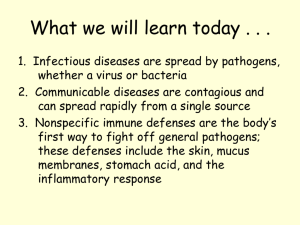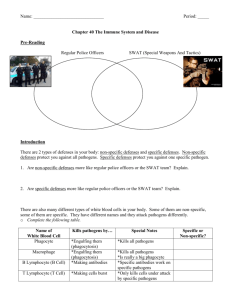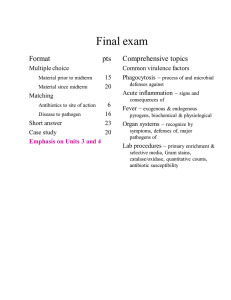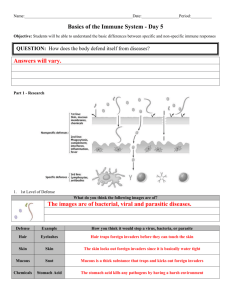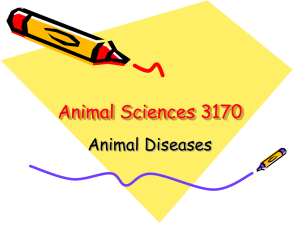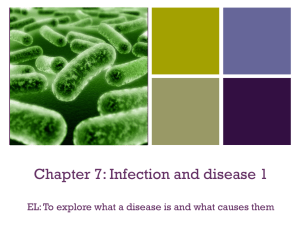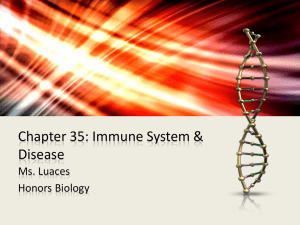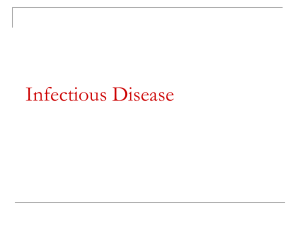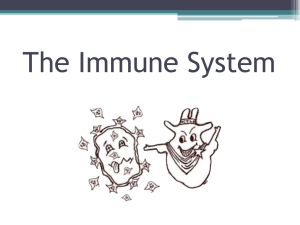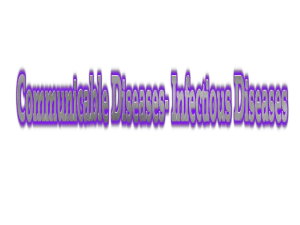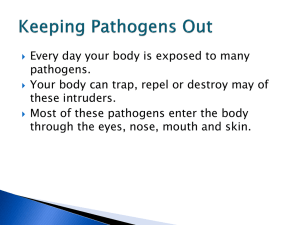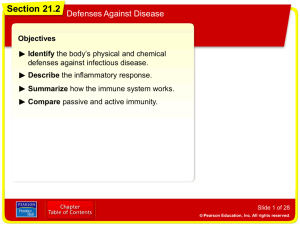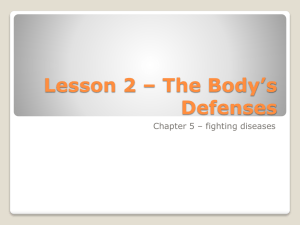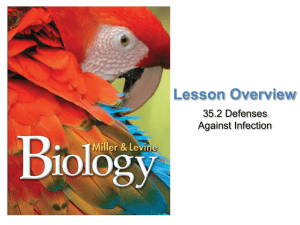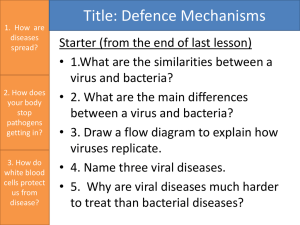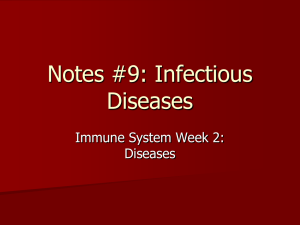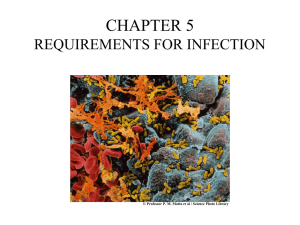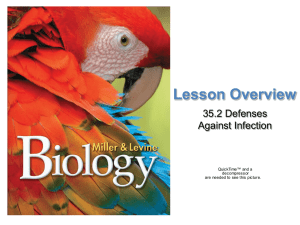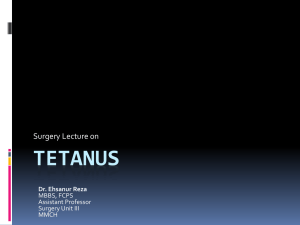Defence mechanisms agaist pathogenic diseases.
advertisement
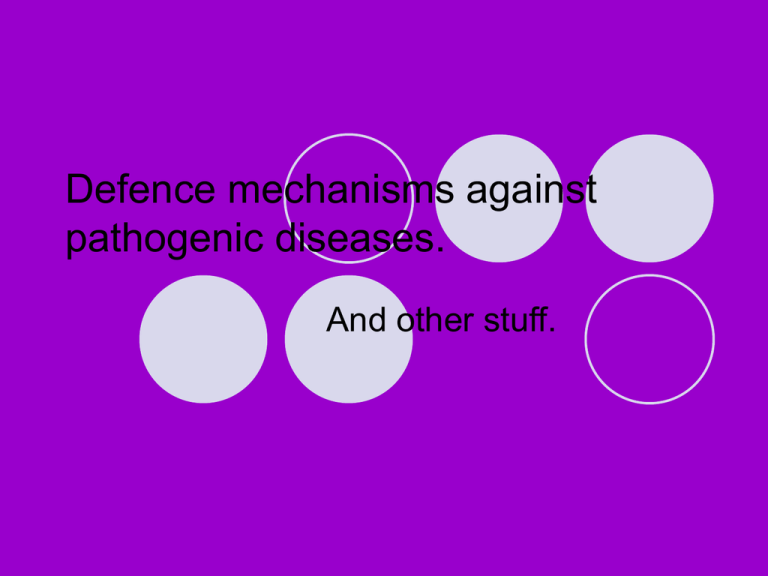
Defence mechanisms against pathogenic diseases. And other stuff. Pathogens Pathogens are bacteria and viruses that cause disease. Infection is a daily event. Sickness however is not because not all infections cause disease. The human body is constantly exposed to pathogens from the very moment of birth. You probably contact many potential pathogens every day. The immune system is our primary defense against microorganisms that cause disease, and consists of NonSpecific and Specific Defenses against infections. Non-Specific Defenses. Non-Specific Defenses guard against pathogens in general. Harmful or not. These defenses are the first line of protection (after the skin) against pathogens in the body. White Blood cells are a non-specific defense. Specific Defenses. Specific defenses are put into action when the Non-Specific Defenses fail. These Defenses are attempts by the body to fend of particular pathogens, usually harmful ones. They are the second line of defense. Well duh! Circulatory System. White Blood cells (lymphocytes) in the circulatory System help the body fight off pathogens, when an infection occurs your body makes more white blood cells to fight the infection. There are two types of lymphocytes, B and T. B produces anti-bodies while T attacks pathogens directly. The Lymphatic System. The lymphatic system is the taxi of the immune system, it carries the white blood cells around to all parts of the body. Lymph is the fluid that flows through the lymphatic system. It carries the white blood cells. Lymph nodes are situated along the lymphatic system and their job is to produce phagocytes which engulf bacteria and poisonous substances. Different ways of acquiring Immunity. Active: When the body is actively producing its own antibodies due to vaccination or infection. The body will continue to make the antibodies after the infection is gone. Passive: When the body receives anti-bodies from the mothers placenta or when injected, the anti-bodies gradually disappear. New Zealands Immunisation program. The NZ immunisation program is free for everyone. Most of the immunisations are just dead or weakened cultures of the disease. Sometimes this isn’t enough for some diseases so actual anti-bodies for the disease are injected into the body. (passive immunity) The injected anti-bodies don’t last very long and are gradually broken down and destroyed. Tetanus. Tetanus is a bacteria which enters the body through a wound. Symptoms are Contraction of muscles (which hurts), especially the jaw and neck muscles. Tetanus injections hurt. Lots. Treating Tetanus. Sometimes Tetanus develops too quickly and the body fails to create enough anti-bodies, sooooooooooo, anti-bodies are injected into the body instead (passive immunity). But other times the body creates its own antibodies to fight the disease. The dead and infected tissue must be removed. Antibiotics are part of the treatment. A sick orange!!! Your lovely presenters: Michelle, Anna, Sarah and Soraya. Incase you missed that it was, Michle, Ana, Saraoh and Sorya. That’s Michelle, Anna, Sarah and Soraya.
